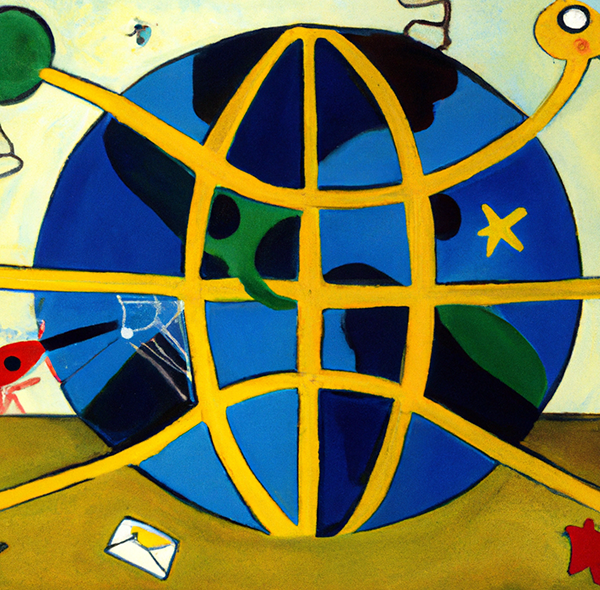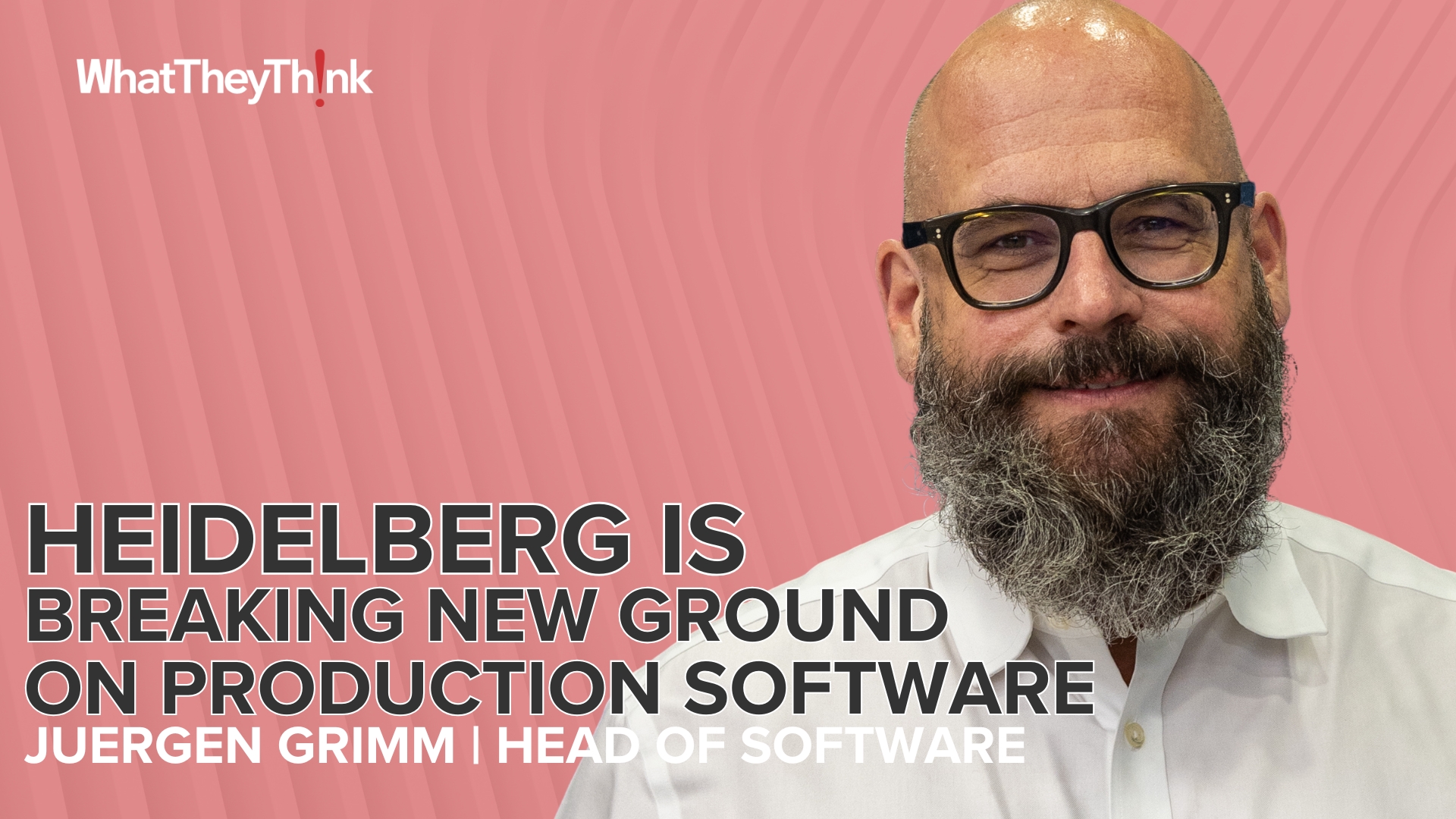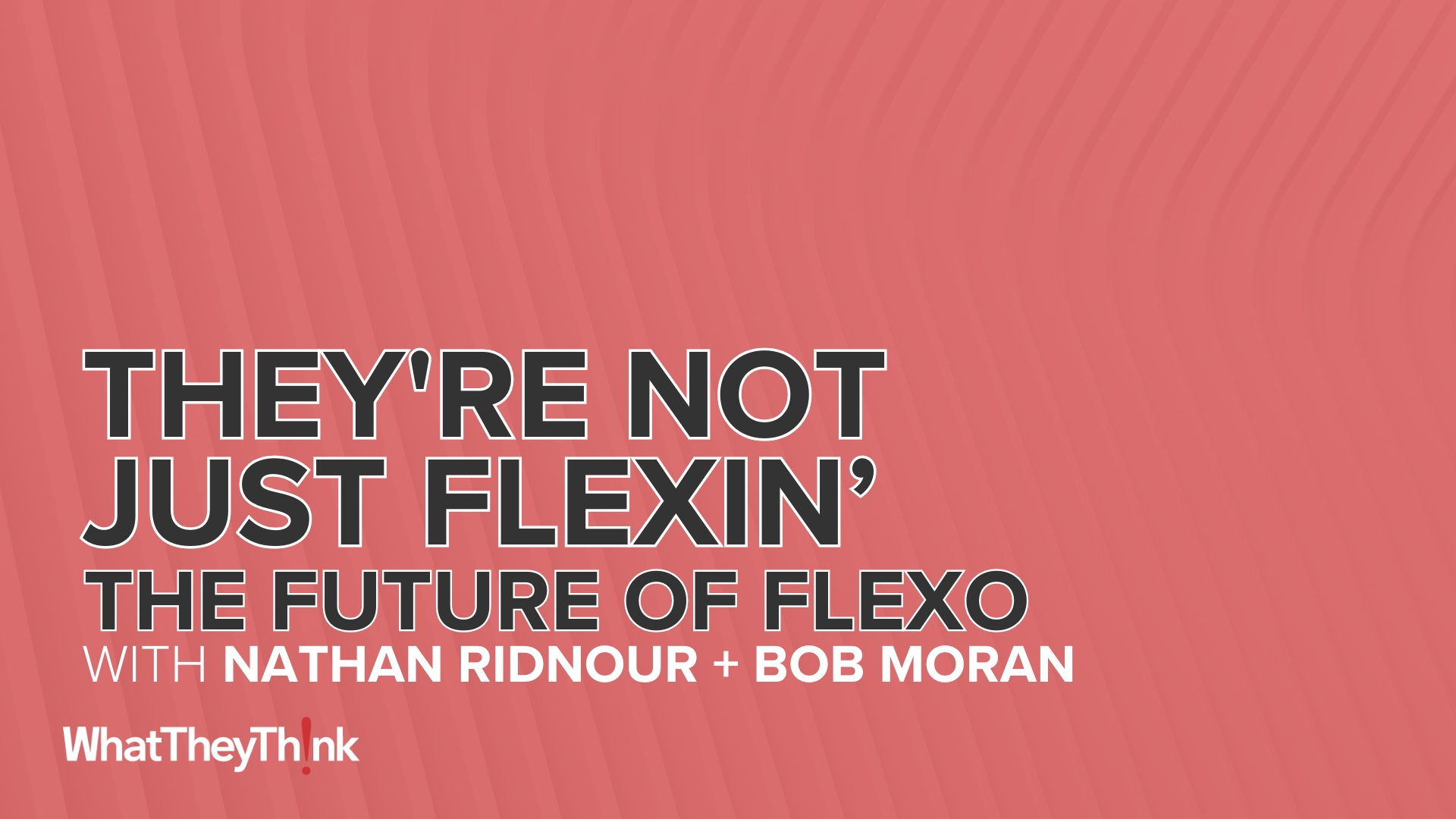
Going to Helvetica
Back in the day, when Comic Sans was being pilloried as the world’s worst typeface (Dr. Joe Webb once referred to it as “the Voldemort of fonts”), there was a lot of “font-shaming” going on—or, as Print magazinerefers to it, “fontroversy.” One example:
In 2012, scientists gathered at the European Organization for Nuclear Research (CERN) in Geneva to hear about an incredible discovery in particle physics by Peter Higgs. This humankind-altering news was met with cheers and tears in the lecture hall. Soon, however, something curious happened: the online chatter about the “God particle” and Peter Higgs was soon surpassed by “Comic CERNs,” a nod to the head-scratching slideshow font choice by the event’s second presenter.
This serves as a prologue to an interview with “design anthropologist” Keith Murphy who describes type as “an ever-present formalization of language in the everyday world” and posits that “typefaces often operate as familiar mechanisms through which broader social and political struggles are able to unfold.” He talks about type choice in the context of branding, and how it’s very easy for brands to get their typography wrong. Sometimes it is driven by new technology:
One big change during that time was cell phones—iPhones came out in 2007 but didn’t really take off until 2010. Brands started to realize that they needed to translate to smaller screens. The Tropicana logo would’ve been hard to render on a small screen. Many brands were simplifying their logos to look better on screens. But if all brands are doing this, then they all start to look alike. That sparked some of the reaction: They’re all Helvetica rip-offs! It all looks like Helvetica!
But then “fontroversies” are often tied to specific periods.
I tried to find examples of people getting upset about fonts prior to the internet, and nothing quite fit how this unfolded in the 2010s. I found an instance of the name of a font in Émigré in the 90s causing some anger (but that wasn’t unusual for Émigré). Since 2016-17, fontroversies are much rarer. When Ikea switched from Futura to Verdana in 2010, it was a PR crisis for the company—spokespeople had to explain things. But, in 2019, when they switched from Verdana to Noto, the news was barely covered.
As he points out, type usually matters only to designers and the general public rarely notices—unless there is “friction,” or a choice of type makes something illegible or garishly inappropriate.
The Singularity Is Even Nearer?
Back in 2005, Ray Kurzweil’s The Singularity Is Near was required reading in what would eventually become the Around the Web bunker. The thesis of the book was that given the exponential advances in technology, it wouldn’t be long before humans and machines began to merge, and he sketched out a timeline of when we can expect these things to happen. A few months ago, the sequel—The Singularity Is Nearer—came out. Subtitled “When We Merge with AI” (that’s AI as in “Artificial Intelligence” and not “Weird Al”—a serif typeface would make this clearer) he updates his thesis and points out that his previous timeline was quite spot on. (He tends to give technology the benefit of the doubt more than we think is warranted. Nanobots in our bloodstream communicating with the Internet to deliver proper medicinal doses? What could possibly go wrong.)
The merging of humans with AI has as its ultimate goal the eradication of death itself, as it “prevents us from enjoying more of the transcendent moments that define us—producing and appreciating creative works, expressing a loving sentiment, sharing humor. All of these abilities will be greatly enhanced as we extend our neocortex into the cloud.”
Or at least those who could afford to will. Anyway, The New Republic has a lengthy profile of Kurzweil and an exploration of the nature of both carbon- and silicon-based consciousness. (How can we determine if AI is conscious when we don’t even understand human consciousness?)
Do androids dream of electric sheep? If they say they do, Kurzweil finds it insulting to suggest otherwise.
Kurzweil is relentlessly optimistic that technological progress will ultimately eliminate virtually all of our social ills. TNR has its doubts:
The Silicon Valley–scented anti-politics that pervades The Singularity Is Nearer reflects a general lack of suspicion around the motivations and intentions of state and corporate actors. That the wealthy states and individuals funding the replication of human brains might also want to replicate and entrench their own power—deploying exponential rates of technological advance to achieve an exponential expansion of social control—does not much concern him. He expresses only disappointment, for example, that Meta halted “exciting progress” toward an AI-powered “brain wave–language translator” whose proto-type enabled the company to predict with 97 percent accuracy what words users were thinking.
Our suspicion is that the future won’t be as rosy as he predicts, but still worth looking forward to.
Dataism
There is something appealing about the term “data-activist collective.” There probably aren’t that many of them, but one of them is New York City-based Data Vandals: “We present data in interesting, exciting and revolutionary new ways, stopping people in their tracks and making them want to learn more.” Needless to say, they are not involved in our Data Analysis section… At any rate, via Print magazine, next week they are hosting a three-day exhibition (starting September 27) at The Cooper Union’s Civic Projects Lab called Hello From the Data Vandals (or free as air and water, or whatsoever things are true).

It will immerse visitors in the vibrant history and evolving landscape of New York City’s East Village through bold data visualizations, sculptures, performances and more—and you can nab your free tickets right here.
The Crux of the Biscuit
In more Earth-shattering news, The Campbell Soup Company is undergoing a major rebrand: they are removing the word “soup” from its name and adding an apostrophe. We give you: The Campbell’s Company. Via NPR:
“This subtle yet important change retains the company’s iconic name recognition, reputation and equity built over 155 years while better reflecting the full breadth of the company’s portfolio,” Campbell’s CEO Mark Clouse told investors this week.
We did not remember, but Campbell’s also owns Pepperidge Farm, as well as Prego and V8.
No word on whether the Warhol painting needs to be redesigned.
To Serve Man
Looking for something unique to serve at your next dinner party? You could try De re coquinaria, a 5th-century collection of ancient Roman recipes. Or you could go back even further, 4,000 years to ancient Babylon. Four clay cuneiform tablets were discovered in what had been Mesopotamia have come to be considered the world’s oldest cookbook—or at least the oldest one we know about. Alas, for decades, they—and other artifacts in the Yale Babylonian Collection—had been hidden away in Yale’s Sterling Memorial Library and few people were able to see them. However, via Atlas Obscura, they are now on public display at the Yale Peabody Museum in New Haven.
So what is in them? Are they edible?
Thanks to Agnete Lassen, the associate curator of the Yale Babylonian Collection, Hafez has some idea of what people in his home region ate millennia ago. Lassen and her colleagues have attempted recreating a handful of the recipes—with mixed results. “I remember her saying some were really inedible,” Hafez says with a laugh. A milky broth with lamb, for instance, had an unappetizing beige color and gloopy consistency.
Part of the problem is that these recipes comprise little more than a list of ingredients with no instructions on what to actually do with them. Still, if you know your way around a kitchen, you may be able to work it out.
A vegetarian stew—inexplicably titled on a tablet as “Unwinding”—and a braised lamb stew with beets both turned out surprisingly well. The latter recipe incorporates both sour beer and tallow, both of which were commonly used ingredients at the time. “There’s blanks to fill in about how you would prepare and cook these things,” Skelly says. “But the mutton stew stood out as one that seemed more interpretable or familiar.”

You can check out the recipe for this and other ancient dishes here.
Outside-the-Box Thinking
Are you looking for a job? Trying to get your resumé in front of the right people? Well, if people who order from Pizza Hut are the right people, then have we got a job-hunting strategy for you. Via Marketing Dive, Pizza Hut is launching a new promotion in which job seekers can have their resumés printed on pizza boxes.
The “ResZAmes” promotion is based on the insight that 75% of resumes sent to prospective employers are never read, according to CareerMinds.com, and the idea that a resume coupled with pizza is harder to ignore.
The promotion is only being conducted in New York City. If you live in New York City—with some of the best pizza options in the world—and are ordering pizza from Pizza Hut, perhaps you need to rethink your pizza strategy.
The company will be accepting resume details and employer addresses via a dedicated website through Sept. 22. Pizza Hut will review the submissions and choose a limited number to print on boxes to be delivered to prospective employers.
The downside is that you might end up getting hired as a pizza delivery person.
Graphene Gets Silky
Was it a good week for graphene news? It’s always a good week for graphene news! Researchers combine graphene and silk for advanced microelectronics, wearables, and next-gen computing applications. From (who else?) Graphene-Info:
While silk protein has been used in designer electronics, its use is currently limited in part because silk fibers are a messy tangle of spaghetti-like strands. To address this, researchers from Pacific Northwest National Laboratory, University of Washington, Lawrence Berkeley National Laboratory, North Carolina State University and Xiamen University have developed a uniform two-dimensional (2D) layer of silk protein fragments, or "fibroins," on graphene.
The scientists explained that their work provides a reproducible method for silk protein self-assembly that is essential for designing and fabricating silk-based electronics. They said that the system is nontoxic and water-based, which is vital for biocompatibility.
They add, “For many years, silk has been a status symbol and a coveted commodity associated with luxury.” In the future, perhaps graphene will be, as well.
Evidence of Things Unseen
This Sunday, September 22, will mark the autumnal equinox—when there are just about equal amounts of day and night. LiveScience has a handy guide to what to expect (well, not a lot, admittedly).
While meteorologists like to call fall at the beginning of September, astronomical autumn starts later, on the autumnal equinox. This year, it falls on Sunday, Sept. 22 at 8:44 a.m. EDT (12:44 UTC), according to the National Weather Service.
At this specific time, Earth's axis is tilted side-on to the sun, meaning there's an almost equal amount of sunlight and darkness across the globe.
The word “equinox” itself is Latin for “equal night.”
The fall equinox is an important way to mark Earth's annual journey around the sun. The hours of darkness will gradually increase north of the equator until the solstice on Dec. 21, and vice versa south of the equator.
As for the old canard about being able to stand an egg on its end only on the equinox, well, the elements that are involved in the equinox have no bearing whatsoever on the center of gravity of an egg. But, if you still want to believe, get out your eggs Sunday morning. (Some claim that it will only work on the vernal [spring] equinox but that makes even less sense.)
Fried
We don’t have much experience with air fryers here in the Around the Web bunker, but here is an interesting option: the Flexify Air Fryer Oven by Chinese appliance brand Midea. (Fortunate spelling. We are not sure we would want to buy an oven from a company called Medea.) It was even voted best-in-show by The Kitchn.
Interestingly, it has French doors. Core77’s Rain Noe is unimpressed.

For heaven's sake, why? The chunky handles not only obscure the view, but add a degree of manufacturing complexity; the doors are linked by a mechanism, so that opening one, opens the other.
If I take the product copy at face value, it seems they're trying to somehow enrich the UX. They refer to the door design as "elegant" before writing "This exquisite appliance features a one-pull, dual-opening door system, seamlessly blending chic aesthetics with unmatched practicality."
The aesthetics is subjective, but "practicality" oughtn't be, and I can't puzzle out how the arrangement improves matters. If anything, having two doors on the side means it requires a greater distance to pull the food out and clear the appliance, versus a bottom-hinged door.
It’s worth noting that the commenters come to the oven’s rescue.
It makes total sense to me. On high counters with tradition bottom-openers, you have to raise your arm up awkwardly to not burn your arm on the bottom piece. My wife is short, and the problem is magnified. Seems like they both need about the same counter space for door reach.
A controversy for the ages. Imagine if it used Comic Sans for the control labels.
Celling Out
Whenever we read novels or watch movies—particularly suspense or horror movies— from before, say, the 1990s, we often can’t help thinking, “If the characters had had cellphones the way we do now, this would be over in five minutes.” (Sure, in many stories, there are landlines, but the villain usually cuts the wires, or there is a storm that knocks the phone lines down.)
The prevalence of smartphones puts today’s writers in a bit of a bind, as it is hard to put characters in peril if they can just call or text for help—or use GPS if they are lost in a mysterious forest. So, via the NY Times, screenwriters have come with a variety of tropes to help solve “the cellphone problem.”
Movies like “House on Haunted Hill” (1999) and “Jeepers Creepers” (2001) featured characters realizing they were holding useless plastic flip-bricks as their situations grew hairy. (In the former, the possessed house kills the signal before any of its inhabitants; in the latter, young adult siblings bicker over a low battery notification after witnessing what turns out to be a winged demon.) With smartphones, there was even more to neutralize, like GPS maps and internet searches. Movies taking pains to explain away cellphones were so prevalent that by 2009, I could collect more than 40 clips for a supercut exploring this development in the previous decade or so.
So a trope that has emerged is “no cell service” and interestingly it only adds to the horror.
While some movies come off as clichéd when treating the cellphone issue as a formality that must be resolved as perfunctorily as possible, others have gotten creative. And the continued ubiquity reflects a certain unease many of us feel when we are off the grid in real life, whether or not we’re in the cross hairs of a maniac. In many examples, the unreliable cellphone is not just a facilitator of the horror — it’s a key element to it. Maybe it’s Pavlovian at this point, but the lack of a working cellphone can scan as an inherently horrific situation.
Other tropes include a dead battery, a broken phone, and login problems:
In “Thanksgiving,” a victim’s newly disfigured cheek causes a facial-recognition failure and renders the phone unusable.
We’re surprised that no one has made a horror movie based on fingerprint ID (or maybe someone has). Think of the possibilities…someone needs to get into a phone, it needs someone else’s fingerprint, there’s a butcher’s knife nearby…
Cat Scratch Printer
Do you have cats? Do you try to encourage them to scratch things other than furniture or human flesh? Sure you can buy cat scratching posts or the like at any good pet store but why not make your own from bits of cardboard you may have lying around? It’s a great way to keep your feral friend from its innate destructive tendencies, as well as recycle cardboard. And, via Laughing Squid, you can 3D print a custom cardboard cutter specifically designed for cat scratching pads. (Now, there’s a niche market.)
Kickass 3D Prints created a cleverly designed 3D printed handheld stripper that cuts even strips of cardboard that are perfect for making cat scratchers, beds, and other imaginative feline furniture.
If you have a 3D printer, the pattern is available for purchase on Cults, although it seems like a Stanley knife and a metal T square would work just as well. Or, get a dog.
A Moveable Feast
Forget the equinox, what we’re really looking forward to is National Taco Day. Unfortunately, there appears to be some confusion as to just when it is being held. Originally scheduled for October 4, apparently Taco Bell successfully lobbied to have it moved to October 1—so that it falls on “Taco Tuesday.” We’re not sure why they would be averse to people having tacos more than once a week.
Of course, the question you may have is, “whom did they lobby, exactly?” Glad you asked. That would be the National Day Calendar, which is where people can register “National [Whatever] Day.” For example, did you know that the last Monday in January is “Bubble Wrap Day”? And even today is a bunch of “Days”:
- National Care For Kids Day
- National Fried Rice Day
- National Pepperoni Pizza Day
- National String Cheese Day
- National Punch Day (the drink, not the fisticuffs)
- National Tradesmen Day
- National POW/MIA Recognition Day
Naturally, some are a bit more serious than others. But you could have quite a party if you combined the lot of them.
We see that Sunday is “Car Free Day.” No word on when “Free Car Day” is.
This Week in Printing, Publishing, and Media History
September 16
1880: The Cornell Daily Sun, the U.S.’s oldest, continuously-independent college daily, prints its first issue in Ithaca, N.Y.
1959: The Xerox 914, the first successful photocopier, is introduced in a demonstration on live television from New York City.
1959: The Xerox 914, the first successful photocopier, is introduced in a demonstration on live television from New York City.
2016: American director and playwright Edward Albee dies (b. 1928).
September 17
1787: The United States Constitution is signed in Philadelphia.
1877: English photographer, developer of the Calotype Process Henry Fox Talbot dies (b. 1800).
1920: The National Football League is organized as the American Professional Football Association in Canton, Ohio.
September 18
1709: English lexicographer and poet Samuel Johnson born.
1851: First publication of The New-York Daily Times, which later becomes The New York Times.
1927: The Columbia Broadcasting System (CBS) goes on the air.
1970: American singer-songwriter, guitarist, and producer Jimi Hendrix dies (b. 1942).
September 19
1796: George Washington's Farewell Address is printed across America as an open letter to the public.
1985: Italian novelist, short story writer, and journalist Italo Calvino dies (b. 1923).
September 20
1878: American novelist, critic, and essayist Upton Sinclair born.
September 21
19 BC: Roman poet Virgil dies (b. 70 BC).
1934: Canadian singer-songwriter and poet Leonard Cohen born.
1937: J. R. R. Tolkien’s The Hobbit is published.
1866: English novelist, historian, and critic H. G. Wells born.
1947: American author and screenwriter Stephen King born.
September 22
1789: The office of United States Postmaster General is established.
1791: English physicist and chemist Michael Faraday born.
1888: The first issue of National Geographic magazine is published.
1991: The Dead Sea Scrolls are made available to the public for the first time by the Huntington Library.















Discussion
By Jim Hamilton on Sep 20, 2024
I don't know if this rises to the level of a 'fontroversy', but a 2017 Saturday Night live skit featured Ryan Gosling as a man obsessed by the fact that the movie Avatar used the font Papyrus for its logo.
I am mostly over my hatred for Comic Sans. It never was the font's letterforms that bothered me, it was its atrocious letterspacing.
What bothers me the most these days is the overuse of Optima. Granted, it's a great font, but you can't walk down any block in America without seeing it a couple of times.